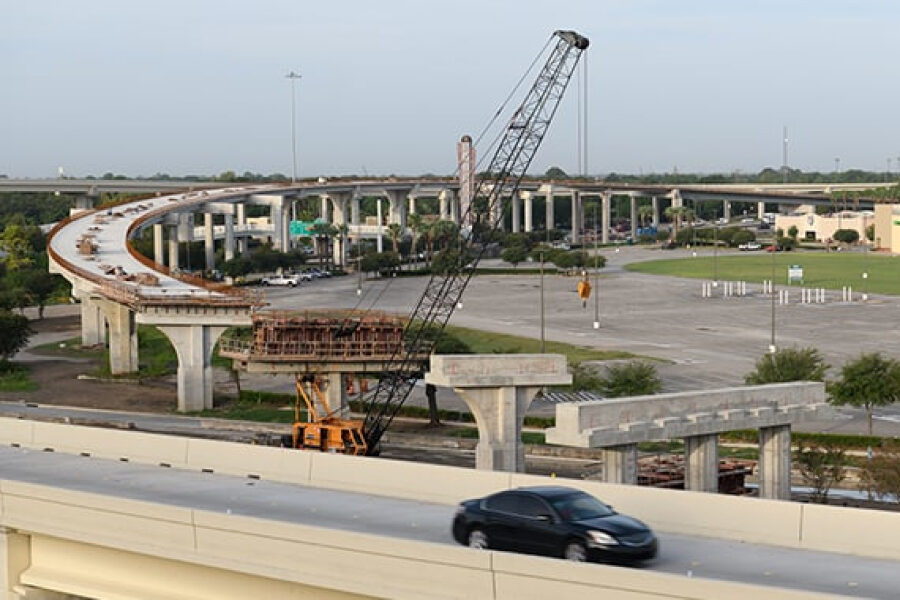10 Best Practices for CPM Scheduling

Have you ever received a 90-page schedule analysis, read the five-page summary, and still didn’t understand what you were looking at? You’re not alone.
Don’t get me wrong — the schedule analysis data is important. But equally important is explaining the schedule in a way that everyone can understand. That starts with ensuring your schedule is accurate, logical, and constructible.
By implementing our top 10 best practices for Critical Path Method (CPM) scheduling, your schedule can transform into a real collaboration between the contractor and the owner.
Top 10 Best Practices for Critical Path Method (CPM) Scheduling
#1: Start Early and Be Consistent
Set expectations, processes, and procedures for schedule submittals early in the project. Communicate them at the pre-construction meeting and be sure to include both the baseline schedule review and monthly updates in your discussion.
Convey that the timely submittal of monthly updates benefits both the client and the contractor by identifying any potential impacts sooner rather than later. Establish a QA review process that aligns with Area/District expectations during this meeting, and do not deviate; maintaining consistency ensures the contractor is aware of schedule expectations and creates a measurable expectation for schedule quality and detail.
#2: Stick to the Facts
Opening a dialogue with the contractor early in the project can streamline the development of the baseline schedule and improve its overall quality. An accurate and complete schedule is the easiest way to identify and resolve potential delays before they impact the project. It’s essential to get it right from the start.
However, dialogue between an owner and contractor is only beneficial to the project if the communication is clear, concise, and without emotion. If you can stick to the facts and communicate them clearly, the contractor is more likely to produce a schedule that will reveal the overall project needs early in the contract.
#3: Know the Project Like the Back of Your Hand
The contractor should always study the plans and contract documents before creating the baseline schedule. Equally important is that the schedule reviewer knows what you’re building and how you’re building it before they dive into the reviews.
The schedule reviewer should have a comprehensive understanding of the sequence of work, project narrative, and traffic control plan in the Plans, Specs, and Estimates (PS&E). They should check that contractual completion dates are being met and that obstacles listed in the contract (such as utility clear dates and right-of-way acquisition dates) are incorporated. They should also make any general notes, special provisions, or special specifications that might impact a construction item. Knowing what’s required ensures the sequence of work is developed in coordination with the plans but is also logical and attainable.
Pro-Tip: Large events (such as football games, rodeos, concerts, etc.) will affect traffic control and project milestones. Ensuring these events are incorporated into the schedule shows a commitment to creating a well-researched plan.
#4: Create Meaningful Logic
Schedule logic should follow a general construction sequence that illustrates the contractor’s intent to build the project and coincides with the sequence of construction within the plans. Resources and crew scheduling should be well defined and clearly shown. Project constraints such as fabrication and procurement times for long-lead items, night work restrictions, lane closure restrictions, and contract specified events or clear dates should also be defined. However, soft logic based on perceived requirements and false logic that creates an illogical sequence of events should be avoided.
Pro-Tip: Soft logic can create more complexity than needed. Including only contract items from the plans and specifications will simplify your schedule and make it easier for others to understand.
#5: Pay Attention to Lags and Leads
While leads (negative lags) should never be used, lags can be an effective tool to show project constraints – or applied to artificially manipulate a schedule. They may indicate places in the schedule where more detail should be shown or where another activity is necessary.
Lags may also indicate where there are additional costs hiding or multiple resources working on items. Correct use of lags can allow the contractor to better show their plan for construction and resources. If used, ensure that that contractor clearly defines the purpose of lag in a relationship and identifies any effects it may have on the logic.
#6: Ensure Consistent and Attainable Production Rates
Production rates should be calculated and estimated based on the quantities for each phase or activity. As you review the schedule, make sure the contractor’s production rates are consistent and attainable. Production rates may be influenced by stacking crews, crew size, site accessibility, and crew shift times or overtime.
Inconsistencies should be well defined by the contractor from the beginning with the baseline schedule. It is important that the production rates that are plugged into the schedule are true predictors of the quantity of work that can be achieved in each phase or activity, so the schedule is accurate.
#7: Use the Project Schedule Summary Report (PSSR)
The PSSR identifies the current status of the project and highlights any movement in the completion date. The PSSR also tracks the gains and losses for calendar days and working days while providing an explanation for the changes and can help identify any potential risk in the schedule.
Should a Time Impact Analysis (TIA) or evaluation of a claim be needed in the future, the PSSR will be a valuable source of information. If a PSSR is not required in the contract, consider keeping your own as a best practice on each project.
#8: Take Advantage of the Schedule Narrative
The narrative is not just a checkbox. It provides an important opportunity for the contractor to convey what changes were made in the monthly update. The narrative ensures that revisions are clearly outlined and issues are identified. If the contractor does not clearly communicate this information, it may provide the basis to reject future Time Impact Analysis (TIAs) or claims.
By going a step further and providing a standardized form to guide the contractor as they complete their schedule narrative each month sets the stage for what is expected in the narrative. It provides an opportunity to be upfront about any schedule changes and places the accountability on the contractor should they choose not to provide the narrative.
#9: Use the Right Calendar
How do you determine if the contractor is using the “right” calendar? First, it should reflect the contract and clearly show how contract time is calculated. Second, the calendar should incorporate seasonal impacts when considering appropriate activities. Make sure the contractor is considering the number of hours a crew will work each day, utilizing historical weather patterns to predict future weather days, and calculating the average number of working days in a month.
Finally, the calendars used should be consistent, realistic, and achievable. For monthly updates, check that the calendar reflects actual work progress and matches the actual daily work hours and project time charges.
#10: Focus on the Critical Path
Identifying the critical path is an important step in reviewing and analyzing the schedule. But identifying and monitoring the “near-critical” path is even more vital. Taking this additional step provides an opportunity to stay ahead of any potential issues and resolve associated delays before they impact the critical path.
Monitoring the “near-critical” path also presents opportunities for discussion with the contractor, in the spirit of partnering, to keep them working and moving forward.
Implementing these best practices will encourage the contractor to provide a clear and true representation of the project in a document that is easy to digest. Creating opportunities for discussion, providing honest feedback, and remaining consistent are simple ways for the owner to be a part of the process while also driving the development of the schedule analysis in a simple and straightforward direction.
With a quarter of our associates in the field every day, RS&H’s construction engineers are knowledgeable in both the everyday field activities and the technical aspects of scheduling. We can help bridge that gap.
To learn how RS&H can help enhance your next project contact Project Manager, Brad Hildebrand at brad.hildebrand@rsandh.com
For additional information, you can also reach out to our Texas CEI Leader, Kirk Fauri at kirk.fauri@rsandh.com.




